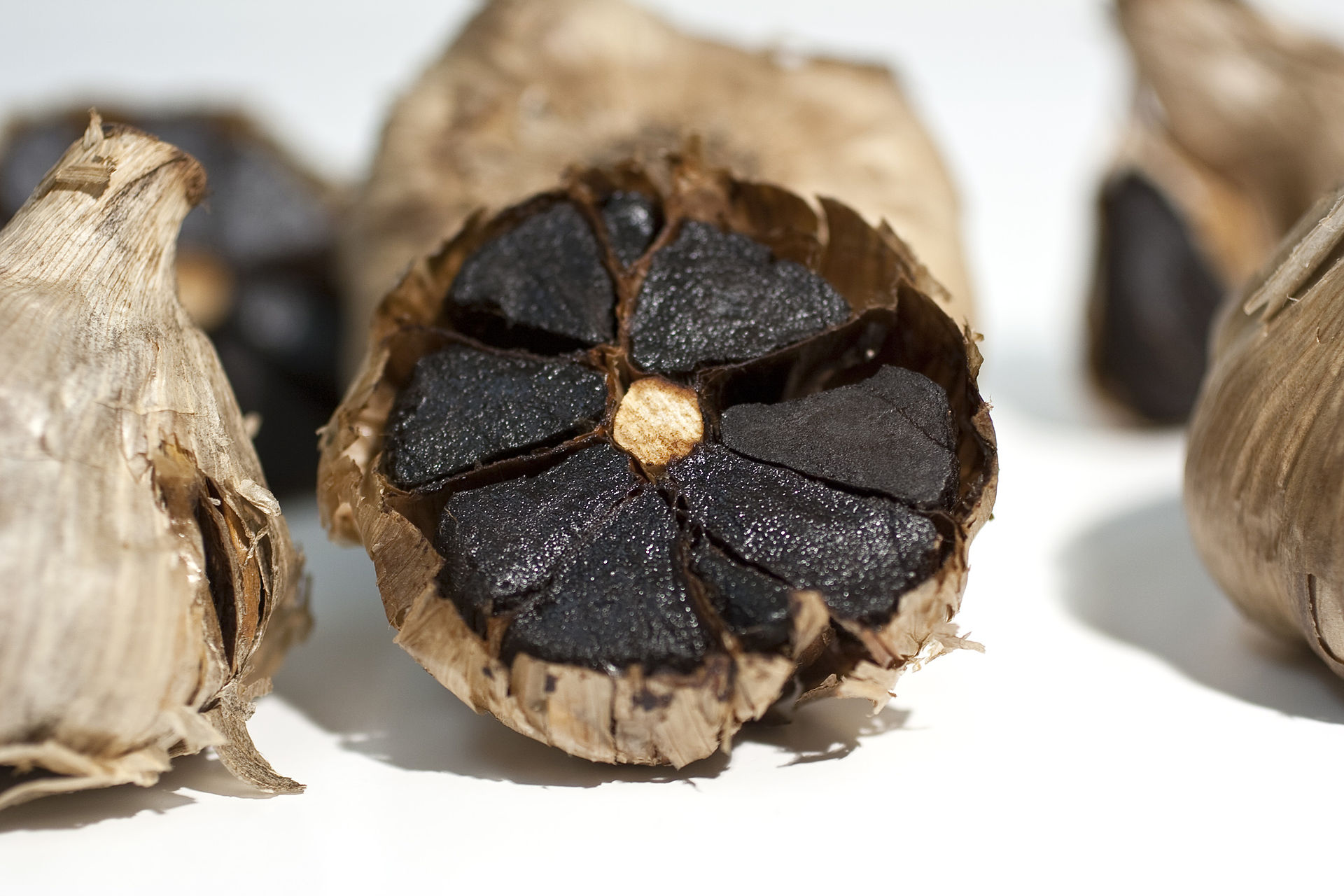
Move aside charcoal lattes, there’s a new goth superfood in town.
It’s caramelly. It’s sweet. It’s got that distinctive “je ne sais quoi.”
But is it actually good for you?
Delving into the history and health benefits, I’m putting black garlic to the test to determine whether or not it’ll stand the test of time to become the world’s next trendy superfood.
A Murky Origin
Throughout the past two decades, black garlic’s popularity has skyrocketed among commercial and public use. It’s been used in all sorts of dishes among New York City chefs, from Chef Evan Hanczor’s black garlic and herb sauce to pastry chef Katy Peetz’s Fennel-Black Garlic Gelato, and has exploded on foodie blogs across the internet.
Novices and professionals all seem to agree that black garlic adds a completely new depth of flavor to dishes and yet, no one seems to know exactly where black garlic came from.
Select any article about black garlic and you’ll read a different story about the origins of black garlic—from a British garlic farmer claiming to discover a 4,000-year-old Korean recipe on the internet to the founder of Black Garlic Inc., Scott Kim, claiming he created it himself. When asked about the beginnings of black garlic, Kim stated, “No matter what you’ve heard, black garlic isn’t an ancient food from Korea. I created it and have three patents for my proprietary process” (Maclean’s).
It’s important to note that the current website for Black Garlic Inc. references Taoism mythology and the longstanding belief that black garlic granted immortality—a contradictory statement to black garlic being a modern-day invention.
A Robust, Rich Flavor
Regardless of its origins, one thing is for certain: black garlic has taken off in foodie scenes and is now expanding into mainstream culture. Made by cooking bulbs of garlic on low for two to three weeks, the result is a blackened bulb boasting a beautiful, brownish-blackish color.
That black color comes from the Maillard reaction, a type of chemical reaction that occurs “when proteins and sugars in and on your food are transformed by heat, producing new flavors, aromas, and colors” (Serious Eats).
That Maillard reaction is the reason why toasted bread tastes so delicious and why dark-roasted coffee tastes so robust and rich. It signals to the brain that the food is both nutritious and well-cooked, a sign to our ancestors that the food in question, essentially, won’t kill us.
Different from fermentation, the Maillard reaction is the result of moisture, heat, and time. When proteins and sugars are cooked over heat for a certain length of time, it results in a toasted, roasted nutty-flavor that makes our mouths water and our stomachs gurgle.
Though health benefits of the Maillard reaction are mixed and largely dependent on the type of food, researchers have linked the Maillard reaction with antibiotic and antioxidative effects, good for fighting pathogens and staying healthy overall.
Added Health Benefits of Black Garlic
Beyond the effects of the Maillard reaction, black garlic also boasts all of the incredible effects of allium sativum (the scientific name for garlic) which include reduction of lung cancer risk, protection of the heart, and additional immunity against the common cold.
Garlic has long been considered an everyday superfood, containing vitamins C and B6 along with manganese, selenium, and additional antioxidants. It’s stood the test of centuries of chefs and doctors who have used the flavorful bulb to add garlic’s sharp taste to dishes as well as treat diseases.
Though black garlic itself is too new to the mainstream food scene to have sufficient research, preliminary studies have already linked consumption of black garlic to health benefits such as:
- Cholesterol reduction
- Liver cleansing
- Digestion
- Immune system boosting
- Fighting Cancer
- And More
The Next Superfood?
Although still under researched and under evaluated, black garlic seems to have all the signs and properties of a food with massive health benefits to stay both fit and fresh. As more research continues to come out, health-conscious individuals should continue to follow news and updates to see if black garlic can endure the test of time and study.
How to make black garlic at home
For something that looks so complicated, black garlic is actually quite easy to make at home—if you have a rice cooker/ slow cooker and a bit of patience. Gently scrub away any dirt from garlic bulbs, and fit 3-4 inside your rice cooker so that they’re not touching. Put the cooker on “warm” setting and wait about 3 weeks, or until the cloves have turned soft and black. Enjoy on vegan pizza, pasta, dips, and sauces. A simple schmear of black garlic on a piece of buttered toast is the ultimate *chef’s kiss* kind of snack.
Also by Dana: Streaming Content Is Equal To Driving 300 Mil Cars In The US Alone. How To Stream Cleaner
Get more like this—Sign up for our daily inspirational newsletter for exclusive content!
__
Photo: Foodista.com via Flickr




